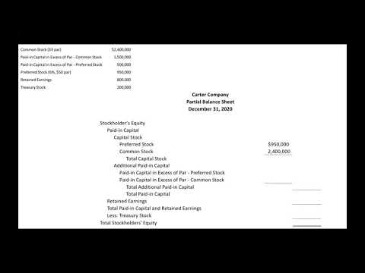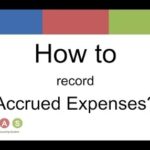
Under the mid-month convention, you always treat your property as placed in service or disposed of on the midpoint of the month it is placed in service or disposed of. The first quarter in a year begins on the first day of the tax year. The second quarter begins on the first day of the fourth month of the tax year. The third quarter begins on the first day of the seventh month of the tax year.
Contents
Depreciate buildings, not land
The revenue growth rate will decrease by 1.0% each year until reaching 3.0% in 2025. For mature businesses experiencing low, stagnating, or declining growth, the depreciation to capex ratio converges near 100%, as the majority of total Capex is related to maintenance Capex. In turn, depreciation can be projected as a percentage of Capex (or as a percentage of revenue, with depreciation as an % of Capex calculated separately as a sanity check). While more technical and https://www.quick-bookkeeping.net/ complex, the waterfall approach seldom yields a substantially differing result compared to projecting Capex as a percentage of revenue and depreciation as a percentage of Capex. At the end of the day, the cumulative depreciation amount is the same, as is the timing of the actual cash outflow, but the difference lies in net income and EPS impact for reporting purposes. Total units to be consumed is the amount of value you expect from the asset, measured in units.
Table of Contents
- The established amount for optional use in determining a tax deduction for automobiles instead of deducting depreciation and actual operating expenses.
- For instance, the advent of new technology brings better products than existing ones.
- On December 2, 2020, you placed in service an item of 5-year property costing $10,000.
- For book purposes, most businesses depreciate assets using the straight-line method.
If Maple buys cars at wholesale prices, leases them for a short time, and then sells them at retail prices or in sales in which a dealer’s profit is intended, the cars are treated as inventory and are not depreciable property. In this situation, the cars are held primarily for sale to customers in the ordinary course of business. Generally, if you hold business or investment property as a life tenant, you can depreciate it as if you were the absolute owner of the property. However, see Certain term interests in property under Excepted Property, later. Depreciation stops when book value is equal to the scrap value of the asset.
Do you own a business?
All of these uses contribute to the revenue those goods generate when they are sold, so it makes sense that the trailer’s value is charged a bit at a time against that revenue. It’s important for investors or potential investors to examine all aspects of your what is consignment consignment definition and benefits business. Tracking depreciation allows investors to view asset usage and also gives them a heads-up when the life of an asset is close to ending. If you’ve ever bought a new car, you know that the minute you drive it off the lot, the car depreciates in value.
Declining Balance Depreciation
After the due date of your returns, you and your spouse file a joint return. The total amount you can elect to deduct under section 179 for most property placed in service in tax years beginning in 2023 generally cannot be more than $1,160,000. If you acquire and place in service more than one item of qualifying property during the year, you can allocate the section 179 deduction among the items in any way, as long as the total deduction is not more than $1,160,000. If you buy qualifying property with cash and a trade-in, its cost, for purposes of the section 179 deduction, includes only the cash you paid. If you deducted an incorrect amount of depreciation in any year, you may be able to make a correction by filing an amended return for that year. If you are not allowed to make the correction on an amended return, you may be able to change your accounting method to claim the correct amount of depreciation.

Capitalized assets are assets that provide value for more than one year. Accounting rules dictate that revenues and expenses are matched in the period in which they are incurred. Depreciation is a solution for this matching problem for capitalized assets because it allocates a portion of the asset’s cost in each year of the asset’s useful life. Although the two terms look similar, depreciated cost and depreciation expense come with very different meanings and should not be confused with one another. The depreciation expense refers to the value depreciated during a certain period. A 2x factor declining balance is known as a double-declining balance depreciation schedule.
Your deductions for 2020, 2021, and 2022 were $500 (5% of $10,000), $3,800 (38% of $10,000), and $2,280 (22.80% of $10,000), respectively. To determine your depreciation deduction for 2023, first figure the deduction for the https://www.quick-bookkeeping.net/what-is-the-prudence-concept-of-accounting/ full year. April is in the second quarter of the year, so you multiply $1,368 by 37.5% (0.375) to get your depreciation deduction of $513 for 2023. On April 15, 2023, you bought and placed in service a new car for $14,500.
For example, the IRS might require that a piece of computer equipment be depreciated for five years, but if you know it will be useless in three years, you can depreciate the equipment over a shorter time. To do the straight-line method, you choose to depreciate your property at an equal amount for each year over its useful lifespan. The first aspect is the decrease in the value of an asset over time. The second aspect is allocating the price you originally paid for an expensive asset over the period of time you use that asset. We collaborate with business-to-business vendors, connecting them with potential buyers.

You multiply the reduced adjusted basis ($480) by the result (28.57%). Figure your depreciation deduction for the year you place the property in service by multiplying the depreciation for a full year by the percentage listed below for the quarter you place the property in service. If this convention applies, you deduct a half-year of depreciation for the first year and the last year that you depreciate the property. You deduct a full year of depreciation for any other year during the recovery period. Figuring depreciation under the declining balance method and switching to the straight line method is illustrated in Example 1, later, under Examples.
For passenger automobiles and other means of transportation, allocate the property’s use on the basis of mileage. To figure depreciation on passenger automobiles in a GAA, apply the deduction limits discussed in chapter 5 under Do the Passenger Automobile Limits Apply. Multiply the amount determined using these limits by the number of automobiles originally included in the account, reduced by the total number of automobiles removed from the GAA, as discussed under Terminating GAA Treatment, later. The determination of this August 1 date is explained in the example illustrating the half-year convention under Using the Applicable Convention in a Short Tax Year, earlier. Tara is allowed 5 months of depreciation for the short tax year that consists of 10 months. The corporation first multiplies the basis ($1,000) by 40% (the declining balance rate) to get the depreciation for a full tax year of $400.

